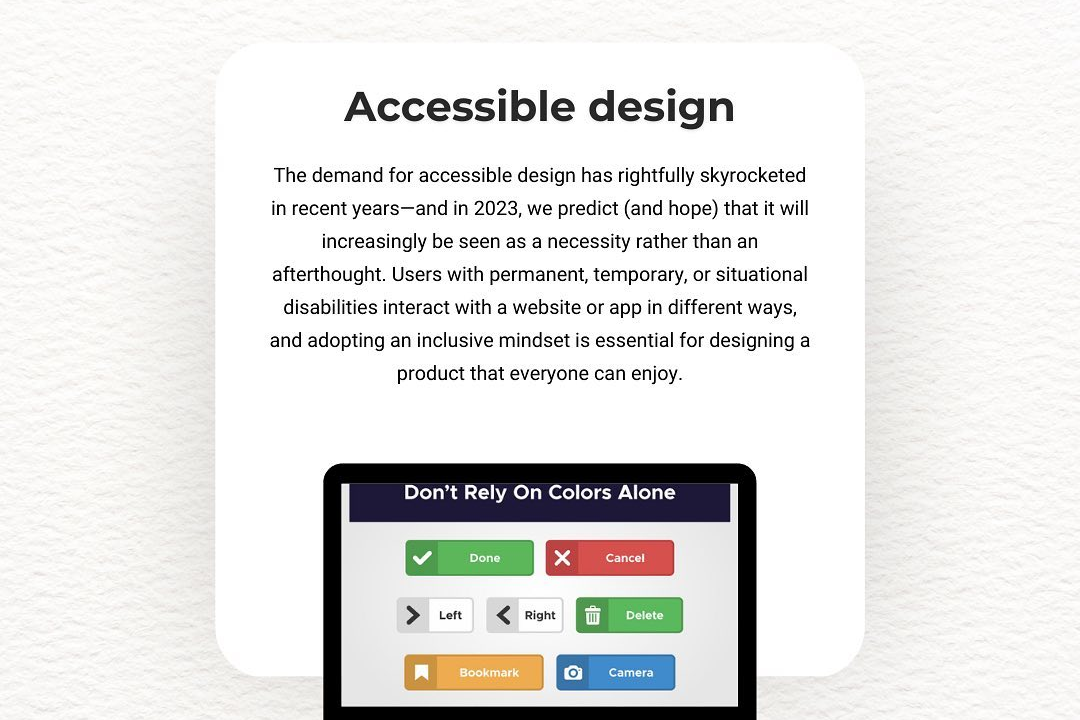Clean Architecture
Mastering Clean Architecture: Building Robust Software Systems
Clean Architecture
Clean architecture is a software design philosophy that emphasizes the separation of concerns, making systems more maintainable, scalable, and testable. By organizing code into distinct layers, such as user interface, application, domain, and infrastructure, it allows developers to isolate changes and reduces dependencies between components. This approach enhances code readability and facilitates the integration of new features or technologies, as changes in one layer do not ripple through the entire system. Clean architecture not only promotes best practices in software development but also ensures that applications remain adaptable to evolving business requirements, ultimately leading to improved productivity and reduced technical debt.
To Download Our Brochure: https://www.justacademy.co/download-brochure-for-free
Message us for more information: +91 9987184296
1 - Separation of Concerns: Clean architecture divides the application into distinct layers, each responsible for specific functionality.
2) Independence of Frameworks: The architecture does not depend on any specific framework, making it easier to switch technologies when needed.
3) Testability: By isolating business logic from external dependencies, it enhances the ability to test individual components independently.
4) Scalability: As applications grow, clean architecture allows for easier modifications, making it scalable to accommodate new features.
5) Maintainability: The clear organization of code improves readability and makes maintenance tasks simpler and quicker.
6) Flexibility: Developers can change one layer without affecting others, providing the flexibility to incorporate new ideas or technologies.
7) Clear Business Rules: Business logic is central, allowing for a better focus on the core functionality of the application.
8) UI Agnostic: The user interface can evolve independently from the business logic, facilitating changes without overhauling the entire system.
9) Reusability: Components can be reused in different systems or projects, reducing redundancy and fostering efficiency.
10) Dependency Rule: Inner layers should not depend on outer layers, ensuring that the core logic remains untouched by external changes.
11 - Enhanced Collaboration: The clear structure aids team collaboration, as developers can focus on different layers without confusion.
12) Long term Vision: Clean architecture is designed with future changes in mind, supporting long term project sustainability.
13) Improved Performance: With a well defined architecture, performance bottlenecks can be identified and resolved without major rewrites.
14) Better Documentation: The structured approach naturally leads to better documentation, aiding both current and future developers.
15) Consistency: Promotes a consistent coding style throughout the application, making it easier for teams to follow best practices.
16) Domain Centric Design: Clean architecture emphasizes domain driven design, focusing on the core domain of the application and aligning the architecture accordingly.
17) Integration Ease: Integrating external systems and services becomes more straightforward, as the architecture isolates the business logic from other concerns.
18) Error Handling: Centralizing error handling in specific layers allows for better management and consistency across the application.
19) Reduced Coupling: Layers are designed to minimize dependencies on each other, leading to a loosely coupled structure that is easier to modify.
20) Lowered Risk of Technical Debt: By maintaining separation of concerns and clear boundaries, clean architecture helps reduce the accumulation of technical debt.
21 - Easy Refactoring: The defined structure allows developers to refactor components with reduced risk, promoting continuous improvement of the codebase.
22) Faster Development Cycles: With clear boundaries and responsibilities, teams can work concurrently on different layers, speeding up the development process.
23) User Experience Enhancement: A decoupled architecture allows designers and developers to focus on improving user experiences independently from backend changes.
24) Better Compliance: Compliance with industry standards and regulations becomes easier to implement, as changes can be isolated within specific layers.
25) Vendor Independence: Organizations are less likely to be locked into specific vendors or solutions, providing greater flexibility in choosing technologies.
26) Support for Microservices: Clean architecture principles align well with microservice architectures, promoting the building of smaller, independently deployable services.
27) Lock in Resistance: The architecture reduces dependency on specific libraries or frameworks, mitigating lock in risks and enhancing long term viability.
28) Enhanced Code Reviews: Code reviews become more effective due to the modular nature of the architecture, facilitating focused feedback on specific components.
29) Improved Onboarding: New developers can onboard more quickly as the structured architecture provides clear paths for understanding the codebase.
30) Community and Ecosystem Alignment: Clean architecture principles are well aligned with many modern development communities and ecosystems, making it easier to find resources and support.
31 - Increased Focus on Security: Security considerations can be factored into each layer independently, allowing for a more comprehensive and layered security approach.
32) Continuous Integration/Continuous Deployment (CI/CD) Compatibility: The architecture's modular nature supports CI/CD practices, leading to more efficient deployment processes.
33) Encouragement of Best Practices: Encourages developers to adhere to best practices, like SOLID principles, which can enhance the overall quality of the software.
34) Legacy Code Integration: Bridges the gap with legacy systems more effectively by allowing new features to be added without disrupting existing functionalities.
35) Ability to Incorporate New Trends: New programming paradigms or trends can be embraced more readily, as the architecture supports change and evolution over time.
Course Overview
The “Clean Architecture” course at JustAcademy is designed to equip participants with the principles and practices of building robust, scalable, and maintainable software systems. Participants will explore the fundamental concepts of clean architecture, including separation of concerns, dependency inversion, and modular design, while applying these principles through real-time projects. The course addresses the significance of creating a clear system structure that enhances flexibility and reduces technical debt, ultimately leading to improved collaboration among development teams and a more efficient development process. By the end of the course, learners will possess the skills to design applications that are easier to test, extend, and integrate, positioning them for success in modern software development.
Course Description
The “Clean Architecture” course at JustAcademy focuses on teaching participants how to design software applications that are scalable, maintainable, and resilient to change. Through a blend of theoretical concepts and practical real-time projects, learners will understand the key principles of clean architecture, including layer separation, dependency management, and modular design. By emphasizing best practices and real-world applications, this course prepares developers to create robust systems that facilitate easier testing, maintenance, and collaboration within teams, ultimately leading to more efficient software development processes.
Key Features
1 - Comprehensive Tool Coverage: Provides hands-on training with a range of industry-standard testing tools, including Selenium, JIRA, LoadRunner, and TestRail.
2) Practical Exercises: Features real-world exercises and case studies to apply tools in various testing scenarios.
3) Interactive Learning: Includes interactive sessions with industry experts for personalized feedback and guidance.
4) Detailed Tutorials: Offers extensive tutorials and documentation on tool functionalities and best practices.
5) Advanced Techniques: Covers both fundamental and advanced techniques for using testing tools effectively.
6) Data Visualization: Integrates tools for visualizing test metrics and results, enhancing data interpretation and decision-making.
7) Tool Integration: Teaches how to integrate testing tools into the software development lifecycle for streamlined workflows.
8) Project-Based Learning: Focuses on project-based learning to build practical skills and create a portfolio of completed tasks.
9) Career Support: Provides resources and support for applying learned skills to real-world job scenarios, including resume building and interview preparation.
10) Up-to-Date Content: Ensures that course materials reflect the latest industry standards and tool updates.
Benefits of taking our course
Functional Tools
1 - Visual Studio / IDEs (Integrated Development Environments)
Visual Studio and other powerful IDEs offer robust features that facilitate the development of applications following clean architecture principles. Students will learn to use various built in tools that help with code refactoring, debugging, and project management. These IDEs provide functionality such as task automation, version control integration, and code navigation, which can significantly enhance productivity.
2) Version Control Systems (Git)
Utilizing Git allows learners to manage changes in their codebase efficiently. Students will understand how to create branches, handle merges, and track project history, which is critical in maintaining clean architecture through iterative development. Mastering Git's features ensures collaboration within teams, making it easier to implement clean code practices while safeguarding against accidental errors.
3) Dependency Injection Frameworks (e.g., Spring, Unity)
In this course, students will explore dependency injection frameworks that are instrumental in achieving clean separation of concerns. By learning to implement these frameworks, participants will be able to manage dependencies more effectively, allowing for more flexible and maintainable code. This practice not only reduces coupling between components but also enhances testability.
4) Unit Testing Frameworks (JUnit, NUnit)
Participants will be trained in using unit testing frameworks to ensure their code adheres to clean architecture principles. Writing unit tests encourages developers to build modular and cohesive code, as they have to consider how each component will be tested. The course emphasizes the role of testing in maintaining clean architecture, demonstrating how it contributes to long term project success.
5) API Documentation Tools (Swagger, Postman)
Students will learn to use API documentation and testing tools like Swagger and Postman to create clean and well defined interfaces. Effective API documentation is fundamental in clean architecture, as it ensures that all components communicate seamlessly. By mastering these tools, participants will enhance their ability to design APIs that are easy to consume and maintain.
6) Containerization Tools (Docker)
Training will also cover containerization with tools such as Docker, which is vital for deploying applications that follow clean architecture. Students will learn how to encapsulate applications and their dependencies, ensuring consistency across development, testing, and production environments. Understanding containerization empowers future developers to build scalable, portable, and maintainable applications.
7) Continuous Integration/Continuous Deployment (CI/CD) Tools (e.g., Jenkins, Travis CI, CircleCI)
This course component introduces students to CI/CD practices that automate the integration and deployment of code changes. Understanding CI/CD pipelines is crucial for maintaining clean architecture, as it allows for rapid testing and deployment of new features while ensuring that code quality remains high. Participants will learn how to set up automated tests, build processes, and deployment strategies that fit within the constraints of clean architecture.
8) Code Quality Analysis Tools (SonarQube, ESLint)
Students will be introduced to tools that help maintain code quality and adherence to clean architecture principles. Tools like SonarQube and ESLint allow developers to analyze code for potential bugs, vulnerabilities, and code smells, encouraging best practices in coding. Participants will learn to integrate these tools into their development workflow to continuously monitor and improve their codebase.
9) Microservices Architecture
The course will delve into the microservices architectural style, which aligns with the principles of clean architecture by promoting separation of concerns and independent deployment. Students will learn how to design microservices that interact seamlessly, how to manage inter service communication, and how to maintain robust data management practices while adhering to clean architecture guidelines.
10) Design Patterns (e.g., Repository, Factory, Strategy)
Participants will explore common design patterns that support clean architecture and enhance code maintainability. Understanding and applying these design patterns enables developers to tackle complex problems and design systems that are flexible and reusable. This knowledge will empower students to make informed architectural decisions that align with clean architecture practices.
11 - Front end Frameworks (React, Angular, Vue)
The course will cover how to integrate front end frameworks with back end systems while maintaining clean architecture principles. Students will learn about component based architecture, state management, and how to ensure the front end and back end communicate efficiently. This knowledge is essential for building cohesive applications that are easy to maintain and extend.
12) Database Management Systems (SQL & NoSQL)
Understanding how to work with both SQL and NoSQL databases is vital for building applications that follow clean architecture. Students will learn how to design database schemas that fit within their architectural framework, how to perform data access in a clean manner, and how to manage data consistency and integrity across services.
13) Application Performance Monitoring Tools (New Relic, Prometheus)
Students will learn to utilize application performance monitoring tools that help track performance metrics, identify bottlenecks, and optimize applications. Understanding how to monitor and analyze application performance is crucial for maintaining high quality software in clean architecture, ensuring applications not only function correctly but also meet user expectations.
14) Cloud Services (AWS, Azure, Google Cloud)
The course will introduce students to cloud platforms that offer various services to support clean architecture practices. Students will learn how to deploy applications in the cloud, utilize serverless architecture, and leverage cloud native tools to enhance scalability and reliability. This knowledge will equip participants with the skills needed to build modern, cloud based applications following clean architecture principles.
15) Agile Development Practices
Finally, the course will delve into Agile methodologies that promote iterative development and rapid feedback loops. Students will understand how Agile practices align with clean architecture by encouraging smaller, manageable pieces of functionality that can be developed, tested, and refined quickly. This approach fosters a more adaptable development process, ensuring that clean code principles are consistently applied throughout the software development lifecycle.
Browse our course links : https://www.justacademy.co/all-courses
To Join our FREE DEMO Session:
This information is sourced from JustAcademy
Contact Info:
Roshan Chaturvedi
Message us on Whatsapp: +91 9987184296
Email id: info@justacademy.co











